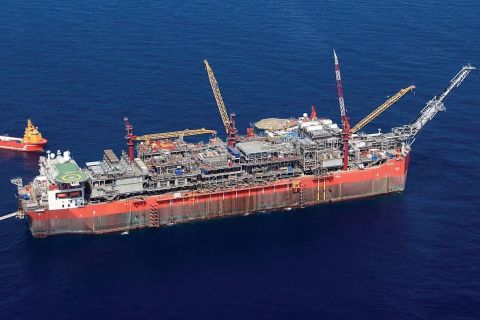
In northern South America, Chevron will hold three promising positions. (Source: Shutterstock)
Chevron’s recent $53 billion all-stock deal to acquire Hess Corp. will boost the company’s profile in Latin America, former Chevron Africa-Latin America president Ali Moshiri told Hart Energy.
“Chevron has [assets in] Venezuela and Suriname and now with Guyana they will have a very strong position in Latin America,” Moshiri said.
RELATED
Chevron-Hess Deal Creates American “Dream Team” Offshore Guyana, Surprises Analysts
‘Efecto Chevron’ Jump Starts Venezuela, but Production to Decline
In northern South America, Chevron will hold three promising positions. In Venezuela, Chevron will have access to the world’s largest oil reserves at around 304 Bbbl and the world’s seventh largest gas reserves at around 221 Tcf, according to BP. The company is the last U.S. producer in the OPEC country and the only one boosting production in recent years.
In Suriname, the company has interests in three offshore blocks: 42, 5 and 7.
And in Guyana, the company will sit in the co-pilot seat next to Exxon Mobil, which operates the prolific offshore Stabroek Block.
Besides Exxon Mobil, which holds a 45% interest in the Stabroek, Chevron will team up with China’s CNOOC, which holds a 25% interest, and assume Hess’ 30% interest.
To date, the partners in the consortium have found over 11 Bboe of estimated gross recoverable resources. And last week the consortium announced another promising find at the Lancetfish-2 appraisal well.
In total, six FPSO units with a gross production capacity of more than 1.2 MMbbl/d are expected to be online in Stabroek by the end of 2027 and there is potential for up to 10 FPSOs to develop the resources.
“Chevron and Exxon are partners in one of the largest fields in the world and they work together extremely well,” Moshiri said. “Therefore, I can see Chevron stepping [in] without any problems or issues at all,” said Moshiri, who after retiring from Chevron in 2017 at the mandatory age stipulated by the company, started Amos Global Energy, a consultancy focused on advocacy work and especially energy matters as they relate to Venezuela.
Moshiri expects more mergers such as the ones seen in recent weeks that have involved Exxon acquiring Pioneer Natural Resources in an all-stock deal valued at nearly $60 billion, followed by Chevron’s acquisition of Hess.
“Consolidation in the industry happens during every high oil price cycle but growth through exploration is not necessarily creating enough value. It’s not competitive compared to an acquisition or merger. This is what we are seeing and I think there is more to come,” Moshiri said.
American versus European majors
Moshiri — a career Chevron employee who at one point also ran Chevron’s Venezuelan affiliate out of Caracas before he retired — said there were noticeable strategic differences between American and European companies amid the global push for low carbon emissions.
“European companies are very much focused on renewables and the transition [but] they’ve found that the transition will erode value for longer than they expected. Bp and Shell have kind of backtracked on their strategies and the transition, trying to catch up with a focus on the core business which is basically oil and gas,” Moshiri said.
He said that was different from the strategies taken by American-based majors Chevron and Exxon.
“But the American companies, the big ones Chevron and Exxon, really focus on balancing the two. I’ve always said that American companies’ strategies were more pragmatic and they really took what needs to be done to eliminate carbon emissions — that is Scope 1 and Scope 2 — while European companies were jumping completely to new energies and so forth.”
Recommended Reading
TotalEnergies Starts Production at Akpo West Offshore Nigeria
2024-02-07 - Subsea tieback expected to add 14,000 bbl/d of condensate by mid-year, and up to 4 MMcm/d of gas by 2028.
Well Logging Could Get a Makeover
2024-02-27 - Aramco’s KASHF robot, expected to deploy in 2025, will be able to operate in both vertical and horizontal segments of wellbores.
Shell Brings Deepwater Rydberg Subsea Tieback Onstream
2024-02-23 - The two-well Gulf of Mexico development will send 16,000 boe/d at peak rates to the Appomattox production semisubmersible.
E&P Highlights: Feb. 26, 2024
2024-02-26 - Here’s a roundup of the latest E&P headlines, including interest in some projects changing hands and new contract awards.
Remotely Controlled Well Completion Carried Out at SNEPCo’s Bonga Field
2024-02-27 - Optime Subsea, which supplied the operation’s remotely operated controls system, says its technology reduces equipment from transportation lists and reduces operation time.






